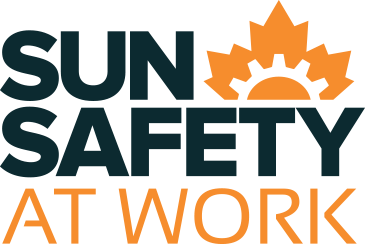Act is the sixth step of the Model Sun Safety Program. This step reflects the need for ongoing high-level review of the sun safety program within the occupational health and safety management system (OHSMS) and a commitment to continual improvement.
Management Review and Continual Improvement
There should be strong commitment from senior management (management commitment) to provide oversight of the occupational health and safety management system (OHSMS)/sun safety program along with commitment for continual improvement of the program.
The management review of the OHSMS and sun safety program is taken by senior management periodically to ensure that it continues to be suitable, adequate and effective.
The management review should also determine actions necessary to address any issues which have been identified through workplace inspections or audits, and review how effective follow-up/corrective actions have been for issues raised by previous management reviews.1
Even though management review is considered to be a cumulative and ongoing process, it should be undertaken formally once a year. It is also important for senior management to consider trends which may indicate a problem with the effectiveness of the OHSMS/sun safety program, and to take account of broader influences on the workplace and on workplace operations which may impact the OHSMS/sun safety program.2
There should also be an ongoing process for identifying and assessing opportunities for continual improvement of the OHSMS/sun safety program including reducing the residual risk associated with outdoor work activities. This includes:3
- Reviewing current control and prevention measures
- Reviewing the best available technologies and procedures to address residual risk
- Implementing a strategy for continual improvement
Off-the-Job Sun Safety
A ‘best practice’ indicator of the effectiveness of any occupational health and safety management system is how it impacts the practices of workers when they are not at work. Outdoor workers tend to have much higher recreational sun exposure than indoor workers. Helping workers and their families to be more sun safe outside of work is an important contribution of a sun safety program. Our off-the-job sun safety fact sheet includes actions a worker can take to protect themselves and their family. These include:
- Be aware of your personal risk factors for skin cancer or heat stress
- Do regular self-examinations for skin cancer/sun damage
- Visit your family doctor/dermatologist annually for a skin exam
- When outdoors undertaking recreational activities, apply our ‘six simple steps’ for protecting your skin and preventing heat stress
- As sun exposure early in life is an important risk factor for skin cancer, make sure that your children are effectively protected at home, at school, and when undertaking recreational activities
- Educate your kids about sun safety
We have also compiled a list of other organization’s resources on off-the-job sun safety.
Build Your Own Program Tips:
Continuous Improvement
Have a process in place to get updates on new recommendations for sun safe practices and new research findings, and keep up-to-date about technologies and equipment to improve your sun safety controls.
Off-the-Job Sun Safety
Look for ways to encourage workers to be more sun safe outside of work. This includes:
- Having shade, sun safety messaging and sun safety promotional material or prizes at corporate events (for example, BBQs, family days)
- Adding sun safety messaging to pay slips
- Providing fun educational activities that workers can take home for their kids.
Act is the last step in the Model Sun Safety Program. Continual improvement is an ongoing process. In the future, you’ll want to cycle through the 6-Step Model Sun Safety Program again. To start again, go to Step 1: Core
Go back to Step 5: Check
- 1. CSA Z1000-14 – Occupational health and safety management. (2014). CSA Group.
- 2. CSA Z1000-14, 2014.
- 3. CSA Z1000-14, 2014.

